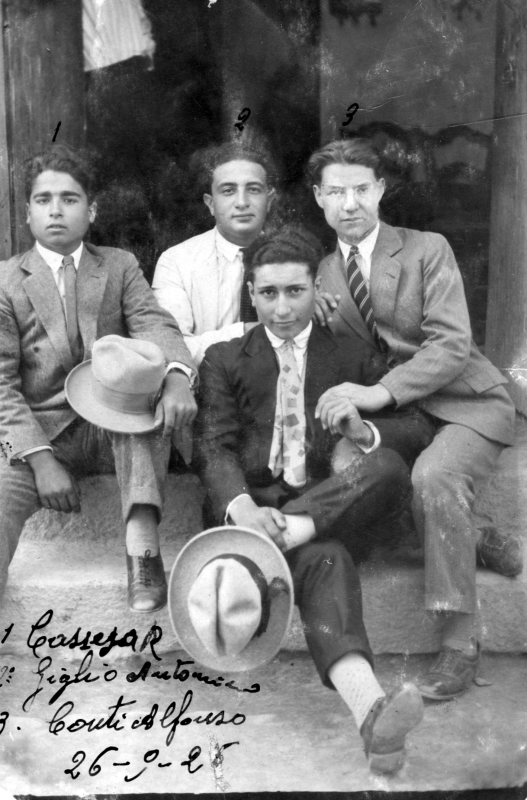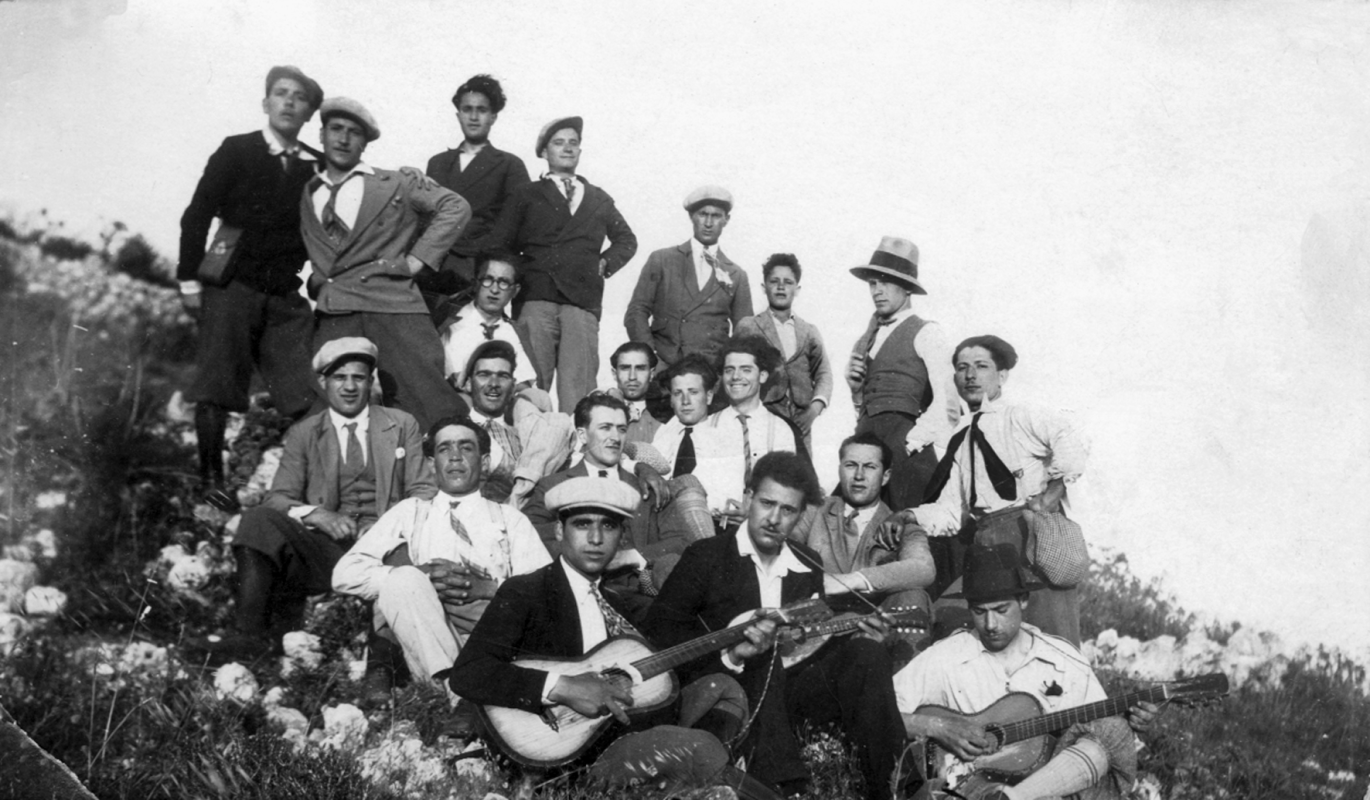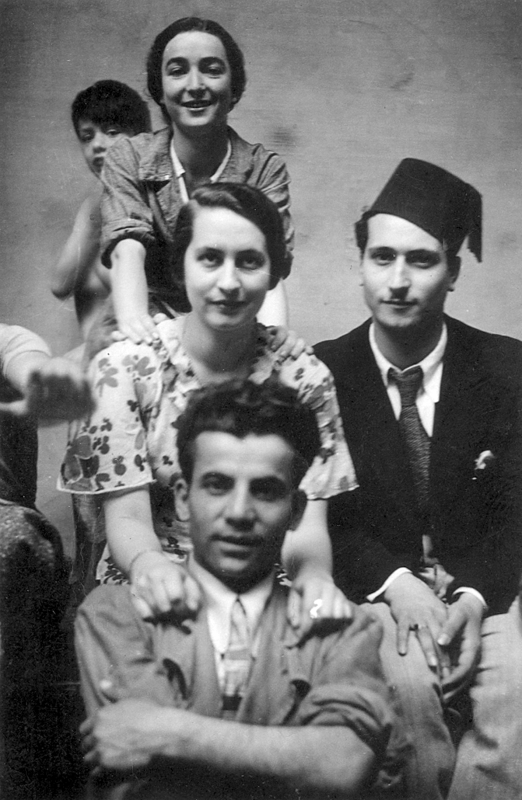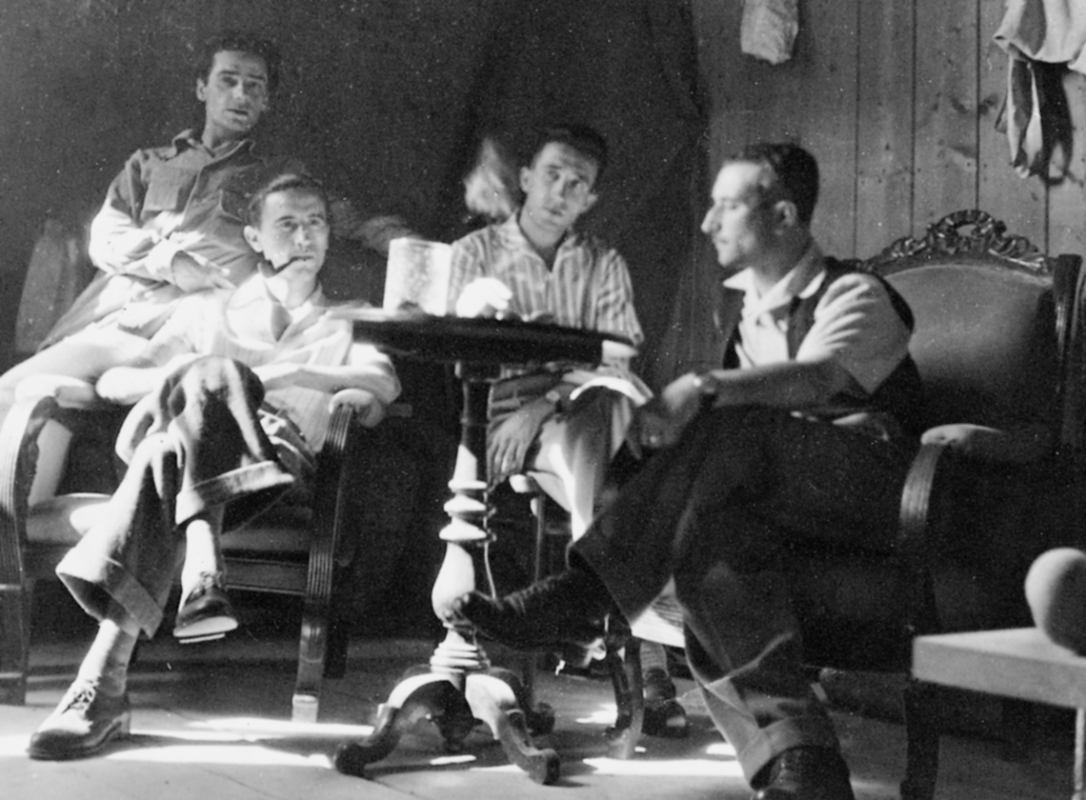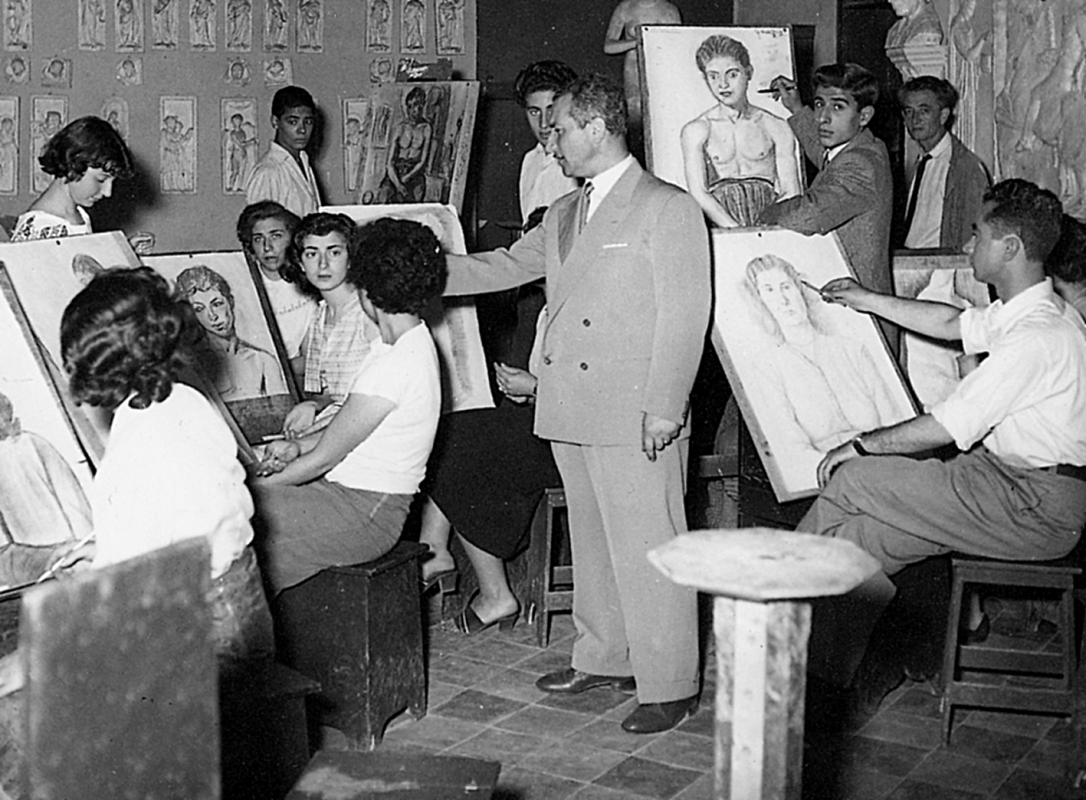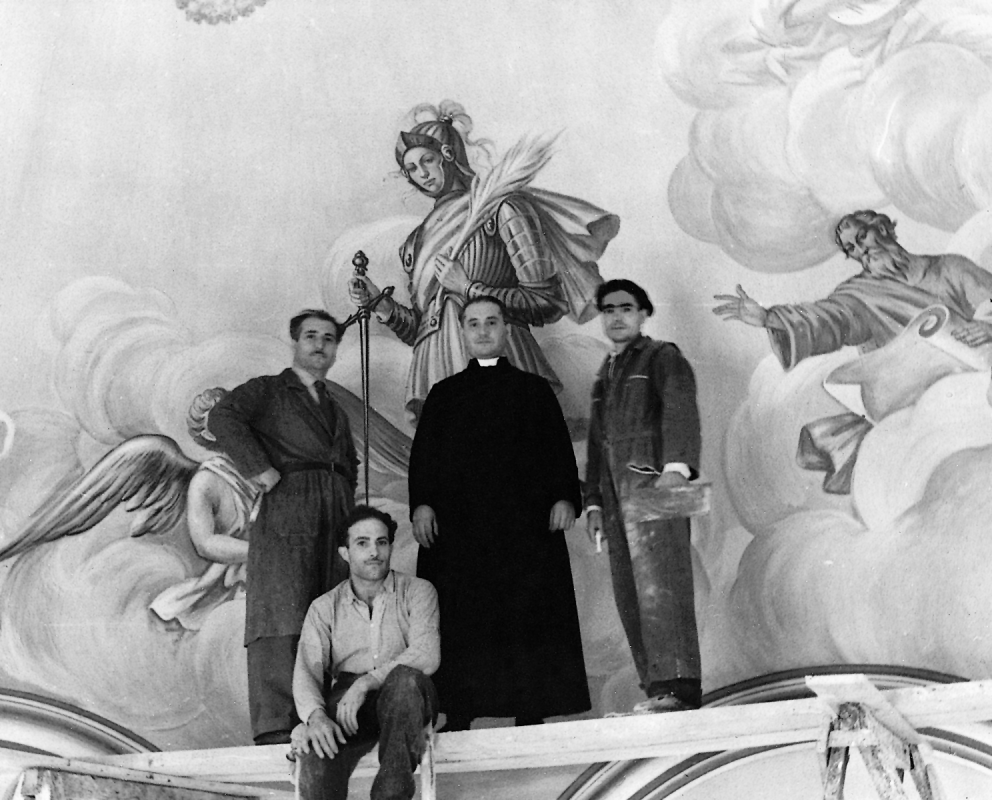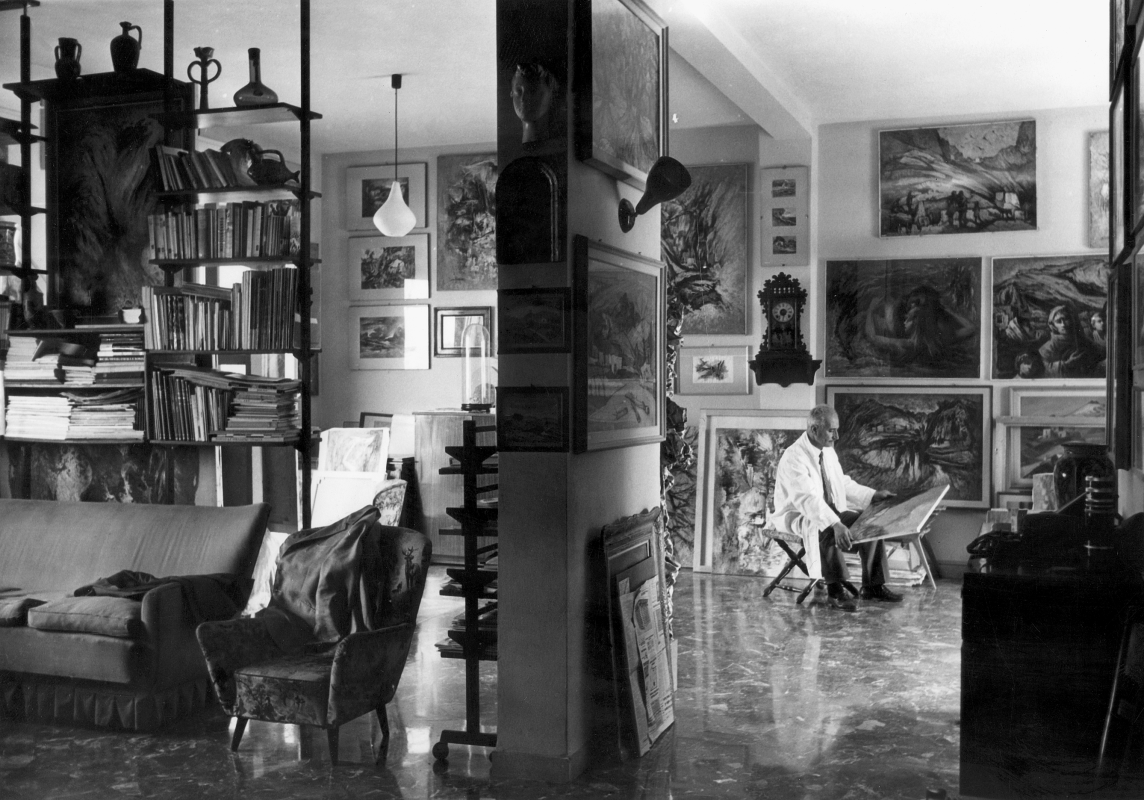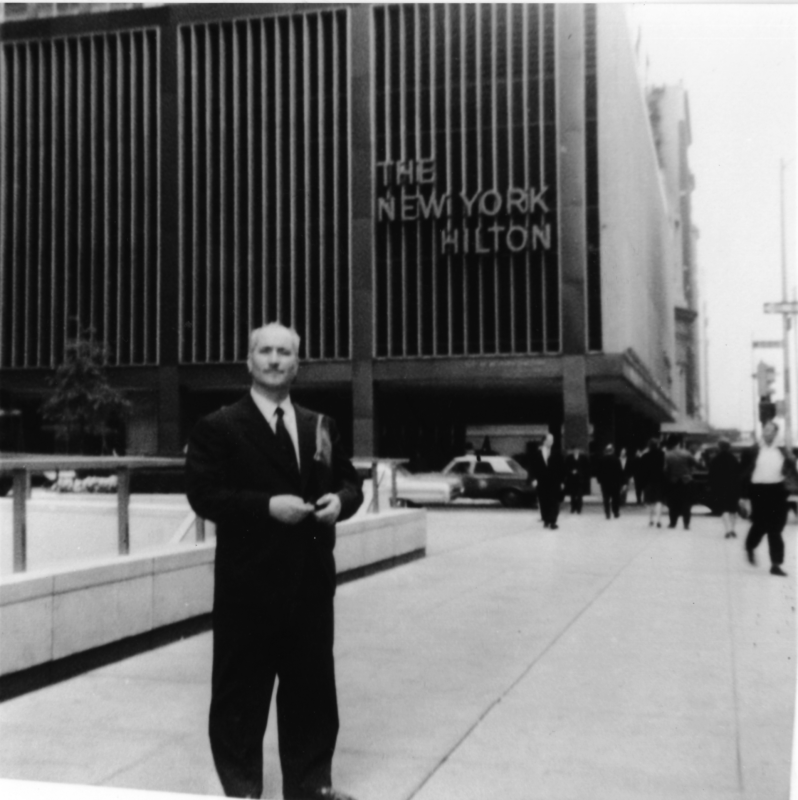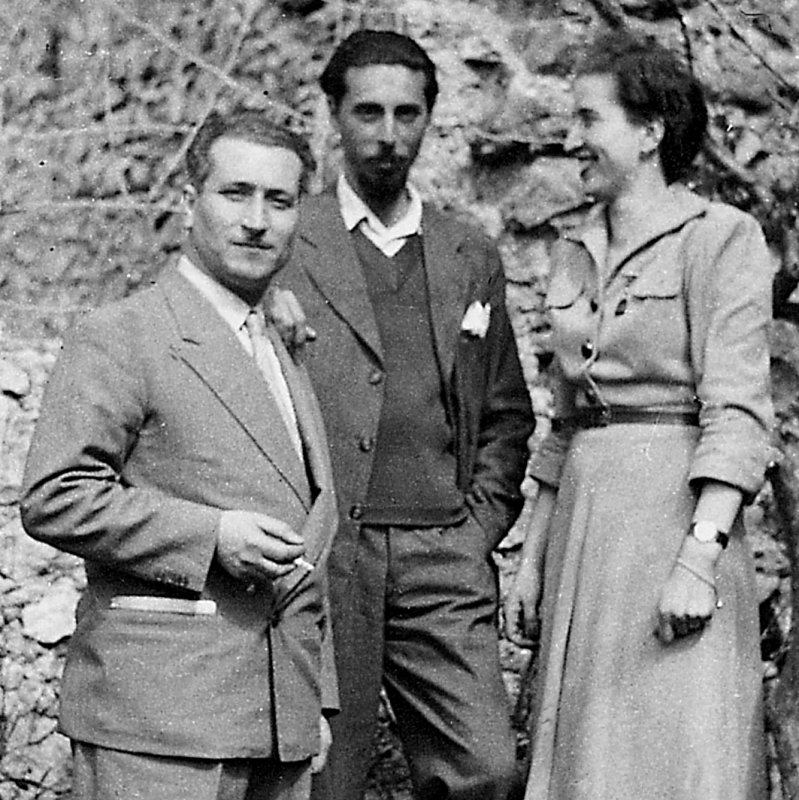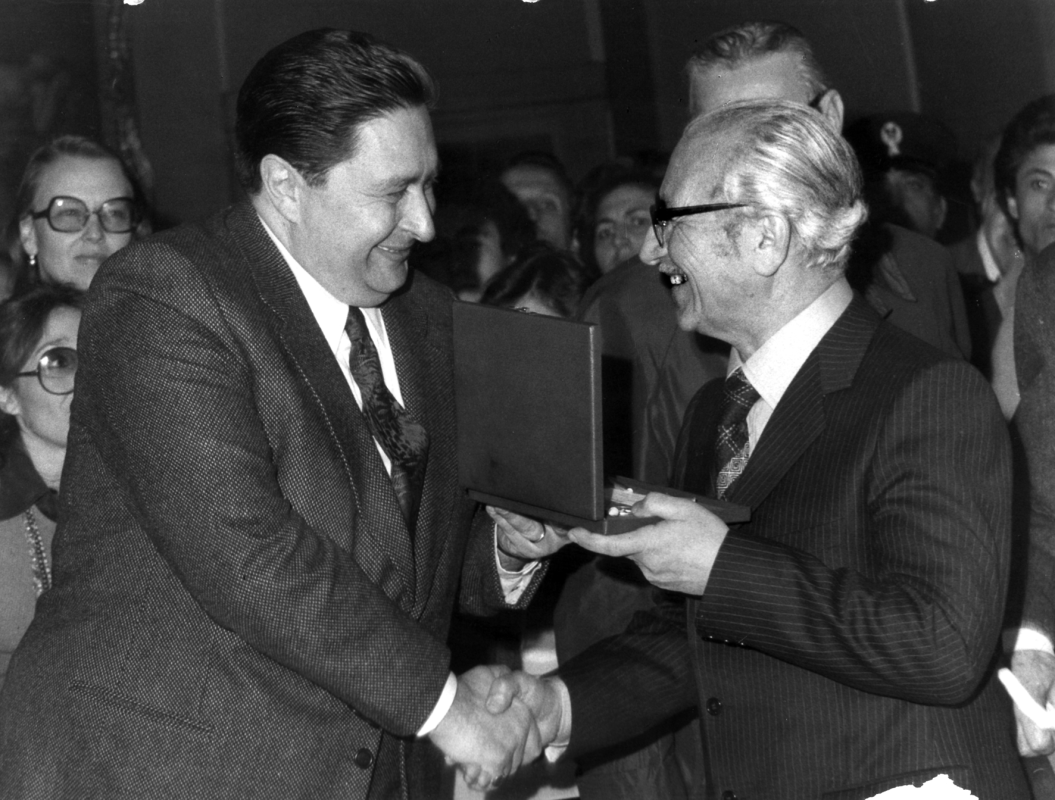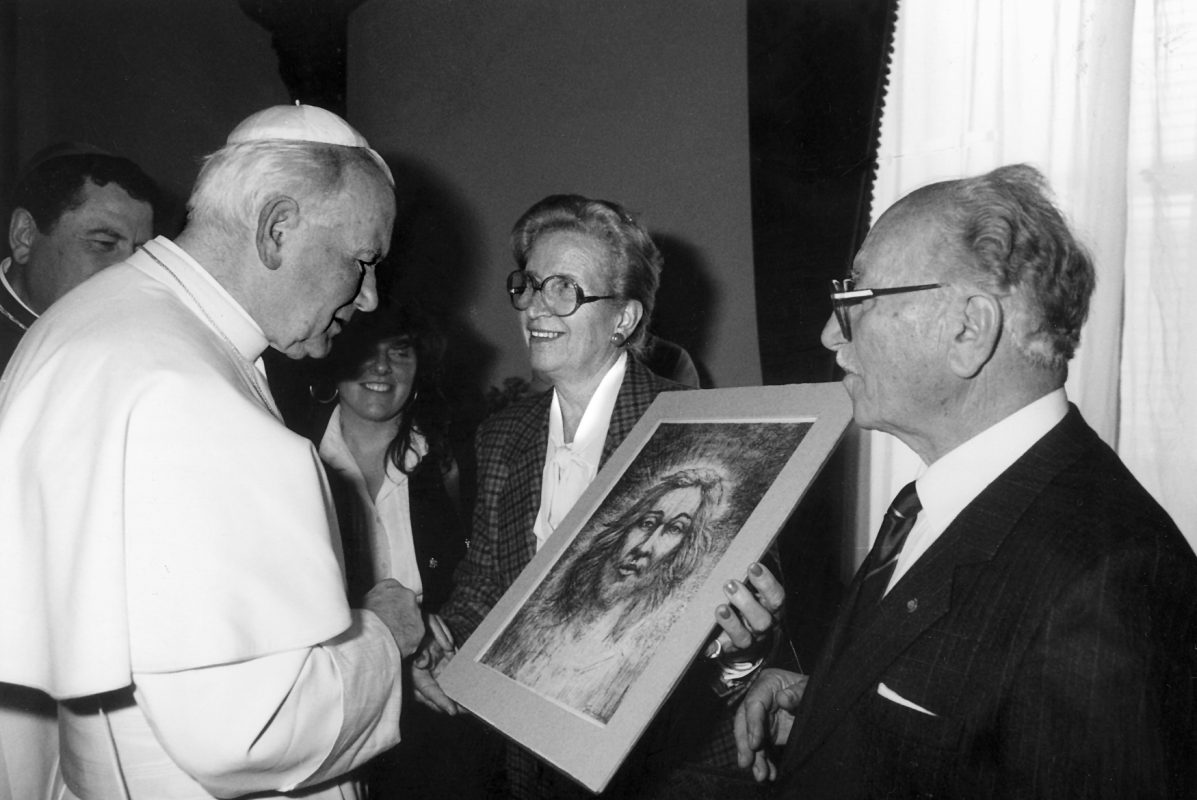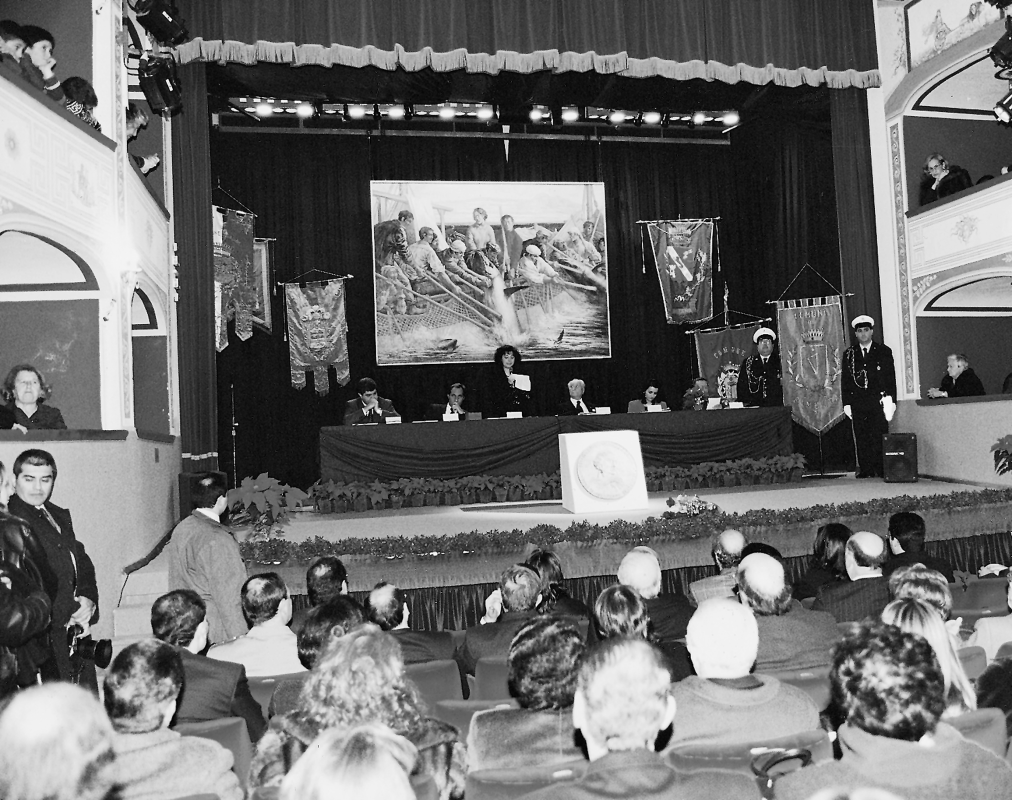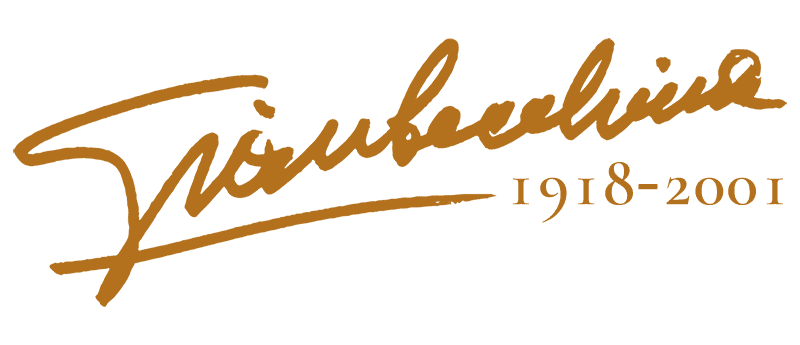
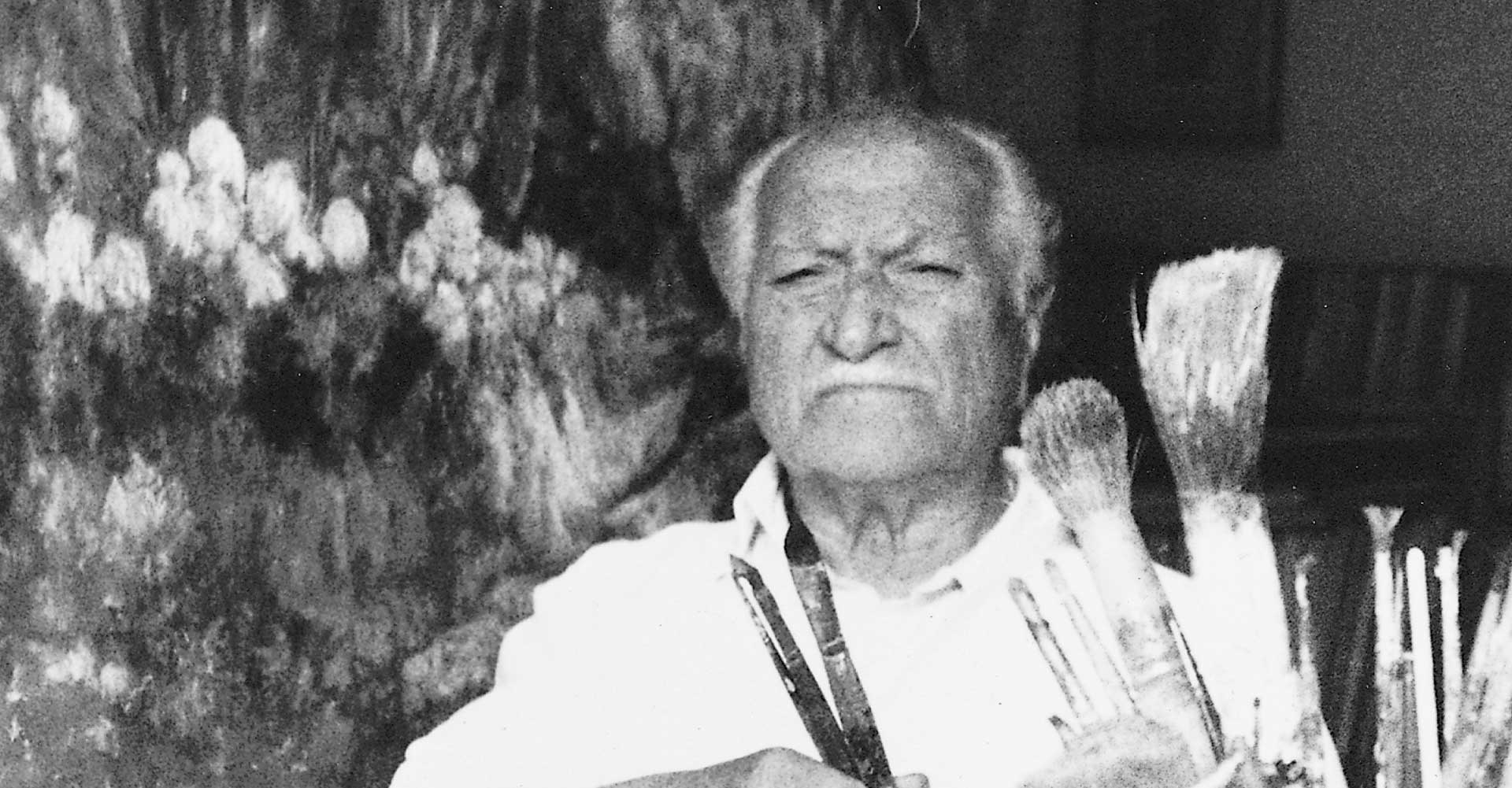
A century-long adventure.
Gianbecchina 1918-2001
The life of a Painter
by Giuseppe Di Giovanna
- 1909 Giovanni Becchina was born in Sambuca Zabut on August 2, the second-to-last of five children, to Audenzio and Calogera Guzzardo.
- 1912 His parents leave for America. John remains in the care of his aunt and uncle, who see to his nephew's education and attempt to start him in the profession of land surveyor.
- 1920 He spends entire days contemplating the decorators who paint the vaults of Sambucese patrician houses, until one of them, Gaetano Grippi, hires him as an apprentice and gives him the first rudiments of painting technique.
- 1922 Moves to Sciacca, where he attends the "Complementary School."
- 1925 To comply with his uncle's wishes, he moves to Agrigento, where he attends the Technical Institute for Agronomists for only one year. He begins to do his first decorative work.
- 1926 Following the example of two other Sambucesi, the painters Antonio Guarino and Alfonso Amorelli, he leaves Sambuca and goes to Palermo, enrolling in the Free School of the Nude, at the Academy of Fine Arts; his teacher is Archimede Campini.
- 1928 He is the only one out of thirty candidates to receive the diploma of artistic maturity.
- 1930 Paints Concertino in terrazza, which marks his orientation toward modern avant-garde experiences and his rejection of the Novecentismo favored by the regime.
- 1934 Leaves for Rome and enrolls in the Academy of Fine Arts; Pippo Rizzo urges him to compete for a scholarship advertised by the Palermo Academy: he wins it and thus continues his studies in Palermo without financial nagging.
- 1935 Participates in the Palermo sodality of avant-garde artists, Guttuso, Barbera, Lia Pasqualino Noto and Franchina.
- 1937 Lives for six months with friend Beppe Sala, an art scholar, in a fisherman's house in Cefalù; paints numerous watercolors outdoors.
- 1938 Exhibits at the 12th Venice Art Biennale. In Rome he is a guest with Guttuso in the studio in Piazza Melozzo da Forlì, together with Pizzinato, a Venetian painter. In the same year he moved to Milan, where, with sculptors Tarantino, Pierluca, Nando and model painter Bettina he shared a basement at 8 Via del Guercino. In Milan he met Beniamino Joppolo and with him Migneco,
Quasimodo, Raffellino de Grada, the artists of "Corrente." These are years of hardship; he has a job as an illustrator for the "Corriere dei Piccoli."
- 1940 He returned to Sicily and obtained a professorship at the Liceo Artistico in Palermo.
- 1942 He meets Maria Marino, from Sambucese, who will become his wife in 1945.
- 1943 Paints Fire in the Farmyard, a work of great expressive intensity and with a remarkable charge of movement.
- 1944 With works such as The Bargaining or The Family he anticipates the advance of neorealism. Guttuso notes "the earthy poeticity" of his style.
- 1946 With numerous drawings he collaborates on the magazine "Chiarezza" and the newspaper "La Voce della Sicilia," documenting the early land struggles for the redemption of the Sicilian people.
- 1948-54 Carries out intense fresco and restoration work, commissioned by the Superintendency of Galleries, in numerous churches on the Island damaged by war events. Participates with La zolfara at the Venice Biennale and wins the "Bevilacqua-La Masa" prize.
- 1957 Returns to easel painting. Wins first prize at the third edition of the "Alcide De Gasperi" Prize with the work Trees and Mountains.
1960-65 Approaches abstract experience with works such as Sirocco, and La grande messe.
- 1965 Leaves for New York to visit siblings and numerous nieces and nephews. Exhibits at the Hilton.
- 1968 January 16. Leaves Palermo to join Sambuca and other towns devastated by earthquake events. Out of this dramatic experience comes a series of drawings and the large painting Earthquake.
- 1968-69 The "lovers" series is born.
- 1971 With friend Franco Grasso hastens to the sites of erupting Etna; Etna, Lava a Concazza, Donne di Zafferana are born from it.
- 1972 Anthological exhibition at the Civic Museum of Agrigento.
- 1974 Left teaching in Palermo and moved to Rome, where he was assigned the chair of Figure at the Liceo Artistico.
- 1975 Organized by the city of Palermo, an anthological exhibition is held in the Civic Gallery of Modern Art. The artist will receive the "Trinacria d'oro," the highest honor awarded by the president of the Sicilian Region.
- 1978 Exhibitions follow one another in a crescendo of success. It is the turn of the personal exhibition "Gianbecchina's Sicily," organized in Palermo by the Region's Tourism Department.
- 1979 Curated by the City of Bagheria, an anthological exhibition is held at Villa Cattolica.
- 1980 September. In Prato, organized by the Municipality, the anthological exhibition "Gianbecchina's Sicily" is held.
- 1982 Exhibits "The cycle of bread" at the Archbishop's Palace in Palermo.
- 1984 August-September. Promoted and organized by the City Council of Sambuca di Sicilia, under the high patronage of the Senate of the Republic, the anthological exhibition 1923-1984 "Gianbecchina in his land: a Hymn to Peace" is held on the premises of the former monastery of Santa Caterina.
- 1985-90 From excursions made in the Sicilian hinterland, the inspiration for a new series of landscapes was born.
- 1997 July 22. In Adragna's summer residence takes place the signing of the deed of gift by which the Maestro donates 190 works executed from 1924 to 1996 to his hometown. September: the Gianbecchina Institution is already a reality.
- 1998 Dec. 18. Organized by the Sicilian Assembly, the major anthological exhibition "Eighty Years of Painting 1918-1998" opens at the Norman Palace in Palermo.
- 2001 Farewell Gianbecchina, singer of the humble. On July 14 at seven in the morning after a brief illness, he passed away peacefully in the quiet of his villa at Adragna in Sambuca.
- December 8, 2001 the Gianbecchina Institution is inaugurated in the town of Gangi in the Madonie Mountains.

